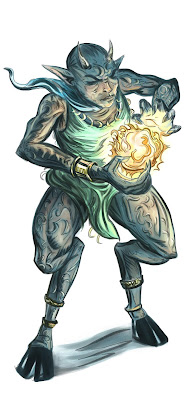The problem with obstacles
 Even though freedom is something of a buzz words these days in games, most games needs to restrict the player somehow. This is especially true for various types of adventure games where the player must be guided along a story path. In this blog post I will call these restrictions "obstacles" and will briefly discuss the various design problems connected with these.
Even though freedom is something of a buzz words these days in games, most games needs to restrict the player somehow. This is especially true for various types of adventure games where the player must be guided along a story path. In this blog post I will call these restrictions "obstacles" and will briefly discuss the various design problems connected with these.First out I want to start out with an example of some obstacles from Penumbra. In Black Plague, after the player as managed to escape from his cell and get to the residential area, we wanted the player to search the area, find notes and solve puzzles. In order to do so we need to halt the player's progress and this was done by a door needing biometric input in order to open. To do this the player must collect some body parts and these are in turn blocked by other obstacles that need to be overcome (another locked door, corridor with gas, etc).
The big problem we have had when designing things like this is to make the obstacles seem well placed, fun and varied. Unfortunately it often boils to having some kind of locked door. And as we all know, while fitting, locked doors are not that exciting. If locked doors can not be used, what can? Below follows is a list of some different types of obstacles:
- Object. This is things like doors, bridges or other man made things that are blocking the players path.
- Environmental. There are obstacle that somehow limit the player movement and include holes, rivers, fires,etc.
- Character. This is normally seen in old point and click games. Some character is blocking the players path and requires something to let the player through.
- Enemy. A deadly creature of some sort that blocks the player path.
- Motivation. The player character does not want to continue because of some personal issue. Perhaps the road up ahead is too dark.
- Hidden. The path that the player needs to take is not yet visible. For example a portal that magically appears after the some condition has been satisfied.
For games like penumbra the game mechanic sets limit on what kind of obstacles that can be used. For example characters did not work because there where no real dialog system. Other games might have other kinds of limits. In some games it might not be a problem if the types of obstacles are not varied as it is part of the basic gameplay. In adventure games it is very important though, and only having one kind of obstacles (like always facing locked doors), makes the game feel repetitive and boring.
After releasing Penumbra Overture, we got some critique that the game contained too many open-locked-door obstacles and tried hard to fix this for Black Plague. The first thing we set out to do was to the skip simple locked door obstacles and if a door was needed we tried to make it interesting. In the example above we used a lock that required human parts to be opened and even though it was still a lock-and-key type of puzzles I think people considered it much more fun. The final game still contained obviously locked doors and we tried to limit this. However, we found it very hard and where not completely pleased at the end.
For Requiem we completely skipped trying to come up with interesting obstacles and instead focused on puzzles. In Requiem a portal always had to opened using some strange orbs in order to progress and this made the rest of the gameplay a lot simpler to design. At the same time it was apparent this was not good for an adventure game and player responses showed this. By using the same type of obstacle throughout the entire game a lot of the adventure feel was lost. This is especially true, like in Requiem, when obstacles are not part of the story either.
What are your thoughts on the obstacles in Penumbra? Know any game with really good or bad obstacles?


Comments
Post a Comment